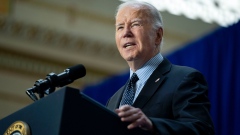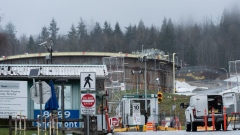Jun 30, 2017
Beyond 150: How Canada can maintain its appeal past July 1
BNN Bloomberg

Maple fever doesn’t appear to be letting up anytime soon.
While there’s been much fanfare this year leading up to the Canada Day long weekend, tourism industry watchers are expecting interest in Canada to continue well beyond July 1.
“I’m not sure you’re going to see a significant pre-Canada Day, post-Canada Day difference,” Tourism Toronto’s Executive Vice President and Chief Marketing Officer Andrew Weir told BNN in an interview.
However, the long weekend festivities may be a “galvanizing point,” Weir said.
The most popular travel times to Canada for the summer are during the last week of June and the first week of July, aligning with the Canada Day long weekend, according to data from flight comparison website Cheapflights.ca.
“Compared to last summer, we are seeing a 44-per-cent increase in travel searches [for Canadian destinations] from points outside of Canada for those two weeks. Searches by Canadians for that same period are up 20 per cent over last year,” Cheapflights editor Jess Hopper said in an e-mail.
Visitations across Parks Canada’s parks, historic sites and conservation areas are up seven per cent compared to this time last year, and camping reservations are up 50 per cent, said Joel Reardon, spokesperson for Canada 150 at Parks Canada, in an interview with BNN.
But despite this anticipated peak volume, Canada 150 isn’t just about the one day or the one weekend, Weir says.
“It’s really been about the year, and you see programming all throughout the year not just in Toronto, but across the whole country,” he said.
According to Hopper, the numbers remain strong for the rest of the summer season and into early autumn. Searches from international travellers from July 1 to the end of September are up 35 per cent from the same period last year, while searches from domestic travellers are up 22 per cent.
- Matt Padanyi: Reflecting on Canada’s greatest business achievements and disasters
- Alex Trebek, k.d. lang and more: How will Canada use its 150 ambassadors?
CANADA 150
LONG-HAUL TRAVELLERS KEY TO MAINTAINING MOMENTUM
Cheapflights’ data shows that there’s been “a big upswing in interest from markets like Mexico, Brazil, South Korea, Vietnam, and Hungary this summer,” Hopper said. “Canada has become an increasingly international brand as a travel destination and pushing more into these far-flung markets seems like a great opportunity for growth.”
Weir agrees, saying that overseas travellers are the ones that will spend the most time here and therefore have a greater economic impact. And one of the keys to tapping into these markets, Weir says, is airline expansion.
“Toronto [has] a major global hub airport and we really benefit from that… But across the country, we’re seeing such strong growth out of places like China and Mexico, and the demand is growing faster than our capacity to serve that demand,” Weir said.
“I’m not saying we’ve hit capacity, but we’re going to hit a point very soon where we can’t grow a whole lot more without new capacity, without more direct airlift.”
In addition to more direct flights, effective marketing is needed to drive increased interest in Canada. According to Ty Speer, president and CEO of Tourism Vancouver, that involves communicating to customers in a way that’s relevant to them in the digital space.
“Understanding how you can reach the right people through use of all the different digital tools and channels that are available today… is probably going to define successful destinations from unsuccessful destinations in the future,” Speer said in an interview with BNN.
Speer notes that a good product is also key; you can’t digitally reproduce experiences “at a hotel or on a flight or at an attraction or at a restaurant.”
But, he says, “The battlefield of the future for us, I think it’s all going to be in that digital space.”





